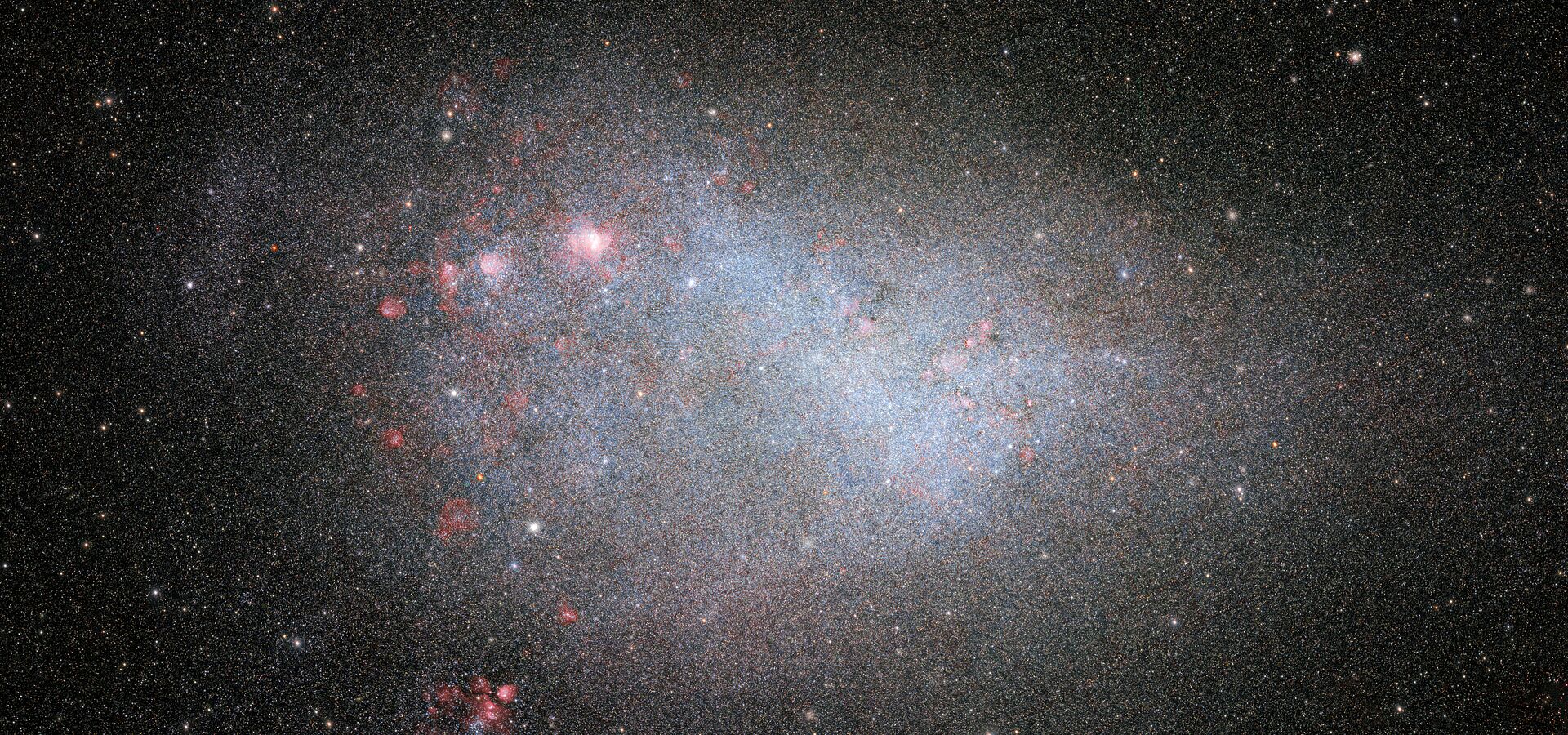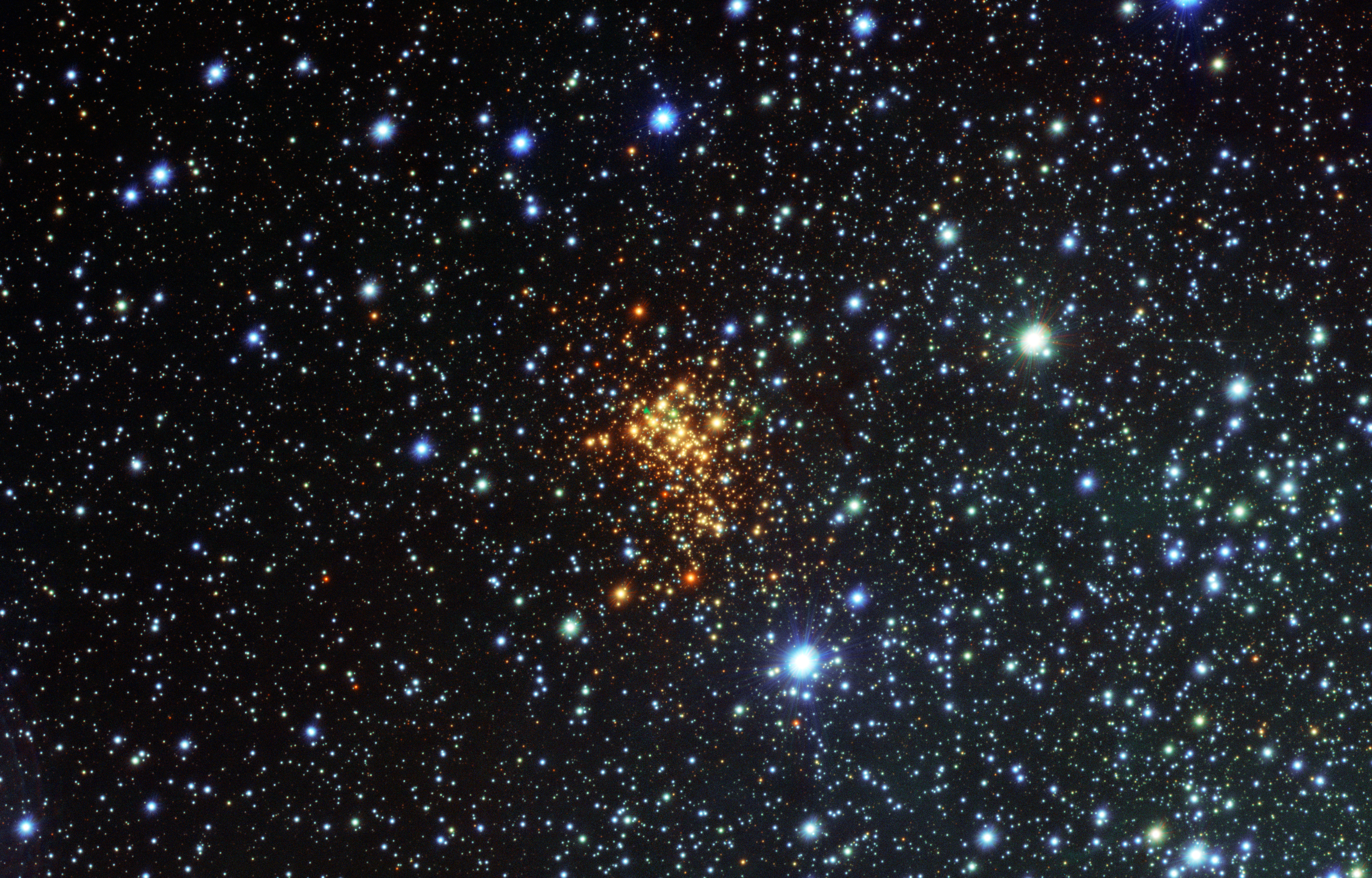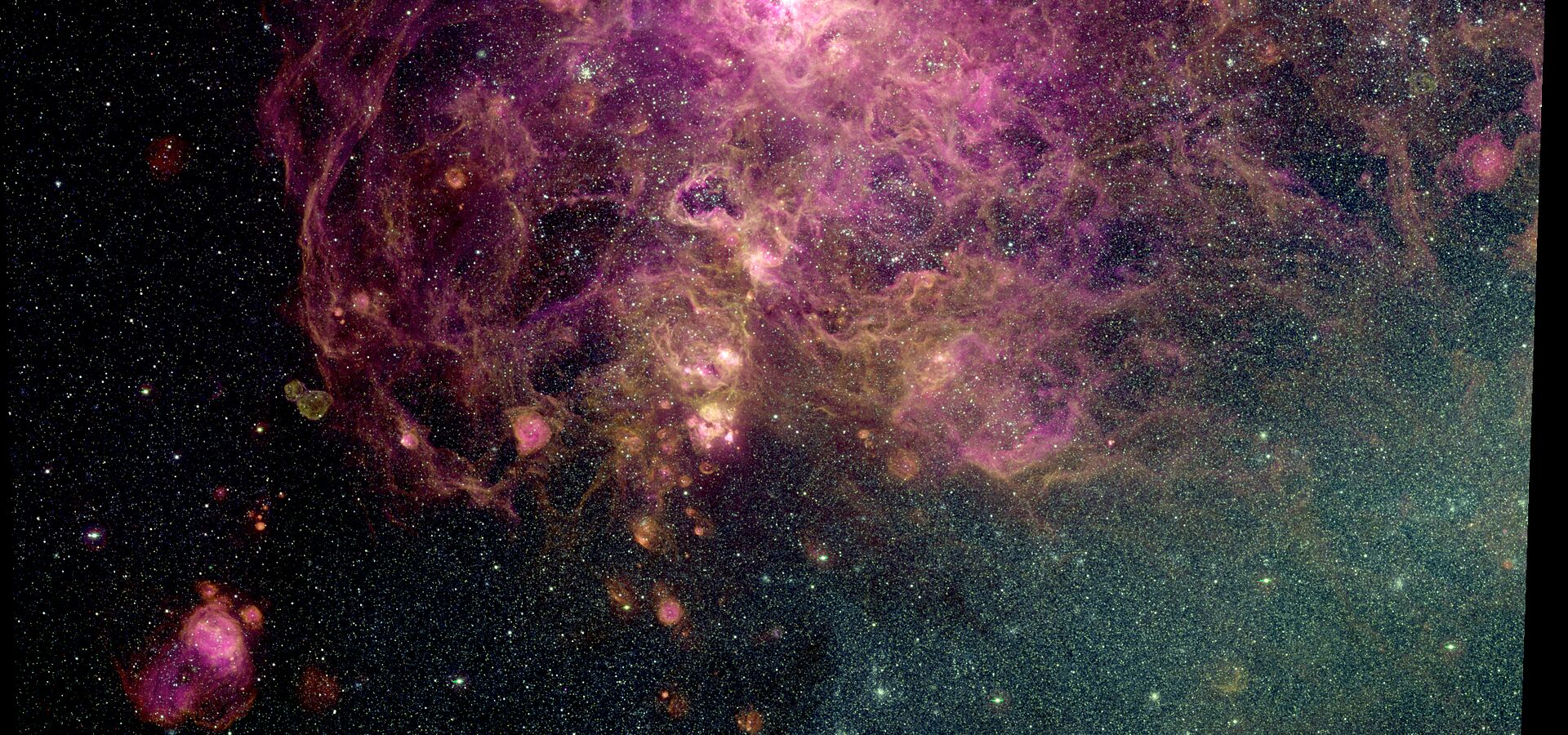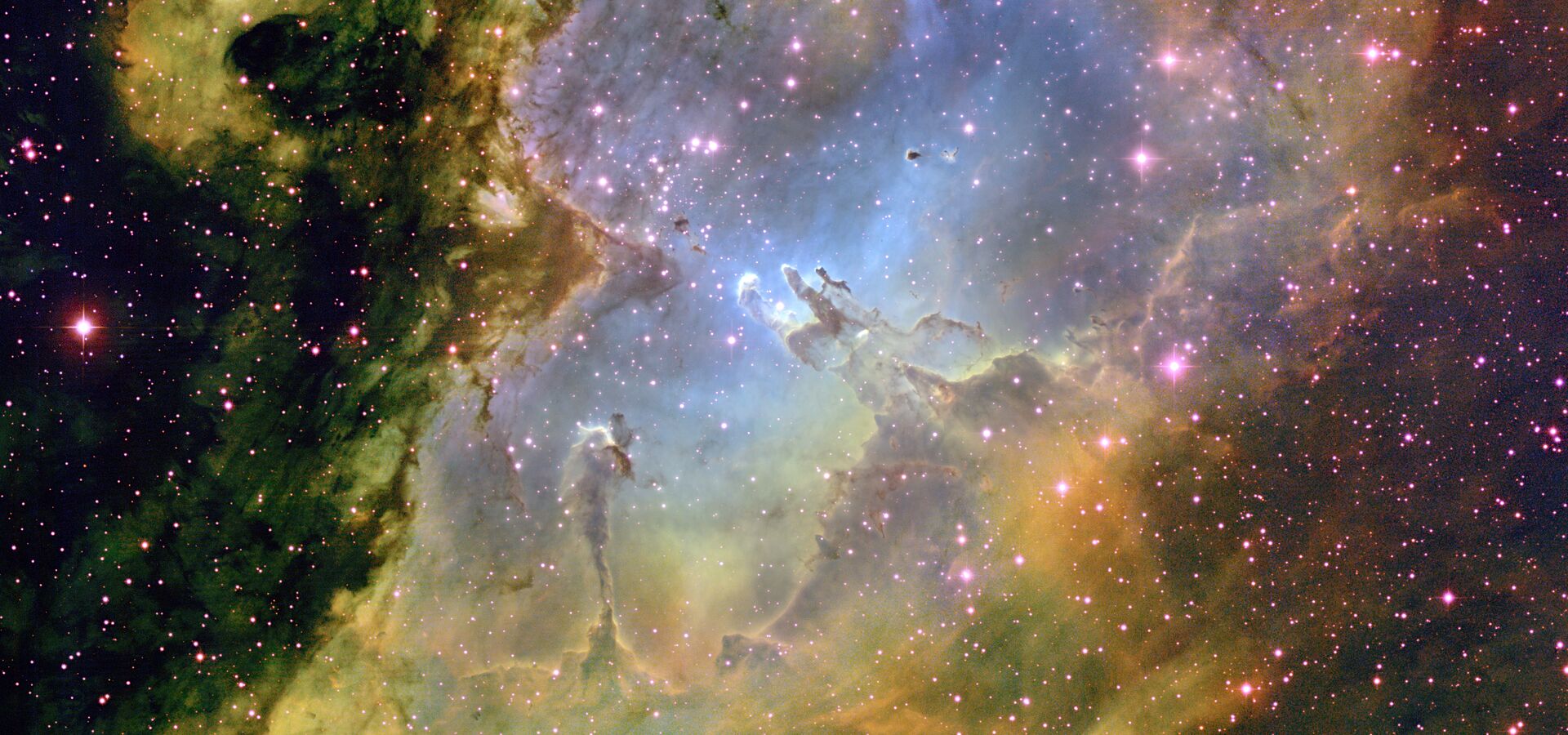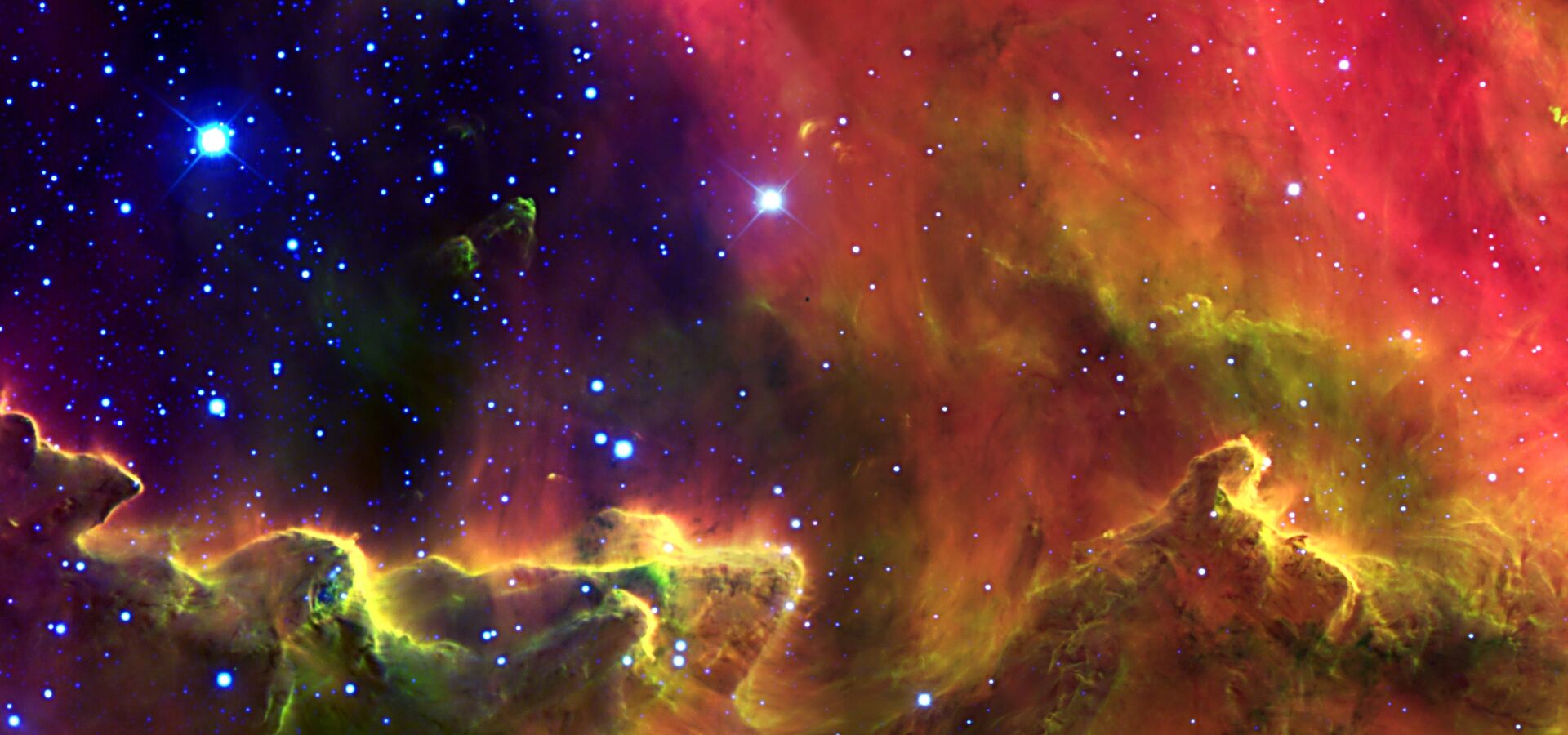Example Research Projects
More information about the program:
Twinkle, twinkle, little star: exploring the Milky Way with variable stars — Mentor: Kathy Vivas
Variable stars are invaluable tools with which to study the structure and properties of stellar populations. RR Lyrae stars, for example, are standard candles which can provide accurate distances because they obey a period-luminosity relationship. They are also among the oldest stars in the Galaxy and hence they can provide clues from the times of the formation of the Milky Way and its satellites, helping us to understand the early assembly of galaxies. Anomalous Cepheids and Delta Scuti stars are also distance indicators and provide insight into both old and intermediate-age stars. The REU student will be involved in a project related to an ongoing effort to characterize the population of RR Lyrae stars and other variable stars in different parts of the Milky Way and its satellite galaxies. The student will learn how to identify and characterize variable stars from large datasets which the mentor and collaborators have obtained with the Dark Energy Camera at the Víctor M. Blanco 4-meter Telescope at Cerro Tololo, and/or the SOAR Telescope at Cerro Pachón for different stellar systems. To do this, the student will learn to use tools for handling large datasets, time series analysis, and will obtain insight into the physical properties of the studied stellar systems based on its variable stars.
The power of trillion suns: characterizing the multi-wavelength nature of super-Eddington active galaxies, and extension to cosmology — Mentor: Swayamtrupta Panda
More than 50 years ago, the discovery of active galaxies (AGN) revealed their extragalactic nature. since then, we have been finding them spread across the distance scales, leading to fascinating discoveries. The luminosity output from these AGN ranges from anywhere between a million to (in the most extreme cases) a few trillion times that of our Sun, suggesting that some of these AGN possess accreting power that far exceeds the Eddington limit. These we call Super-Eddington sources. A key characteristic of such rare AGN is the copious amount of metallic lines they present in their spectrum, many of which, when studied properly, can help reveal why these AGN are special and how they impact their host galaxies (and vice versa). More importantly, these AGN, spread across cosmic time, can be utilized as standard candles and help infer the cosmological parameters of our Universe. The student will utilize existing high-quality spectroscopic datasets of known Super-Eddington AGN in the optical and near-infrared obtained from NOIRLab facilities, investigate their broadband spectral energy distributions, and help constrain the performance of AGN for cosmology.
Binary Hunters: Seeing through the eyes of a fox to reveal hidden star pairs — Mentor: Venu Kalari
What if that "single" young star you’re staring at is actually two? Or even more? In the chaotic nurseries where stars are born, most don’t form alone. In this project, the student will use speckle imaging from Zorro/`Alopeke (Fox in Spanish/Hawaian) to uncover close binary companions among young stars in nearby star-forming regions. They will learn how to analyze speckle images, measure separations and brightness contrasts, and distinguish real companions from background imposters. This study addresses key questions on how stellar environments shape star formation. It also introduces key skills for astronomy and other STEM careers.
Nearby dwarf galaxies and extragalactic star clusters — Mentor: Bryan Miller
The dwarf galaxies and star clusters of relatively nearby (< 20 Mpc) galaxies and galaxy groups can be used to probe the assembly histories of galaxies and groups like the Milky Way and its Local Group. The luminosity function of dwarf galaxies is also important for comparing with the results of cosmological models. Possible projects for REU students include working on our Neighborhood Watch Dark Energy Camera (DECam) imaging survey of nearby galaxy groups, follow-up studies to that, and our Gemini/GeMS adaptive optics survey (G4CS) of Milky Way globular clusters. Activities will depend on the student’s interests and preparation, and may include reducing DECam data using our custom pipeline, visual searches for dwarf galaxy candidates, working on and running algorithms for finding dwarf galaxies and star clusters, and reducing or analyzing GMOS spectra of dwarf galaxy candidates to determine membership, ages, and abundances. G4CS projects could include running our existing data reduction and photometry pipelines on new datasets and fitting stellar evolutionary model color-magnitude diagrams to determine accurate distances and metallicities. Project goals would be set so that they could be achieved within the 10-week REU program.
Bubbles and blowouts: supernova remnants in the interstellar medium — Mentor: Sean Points
Supernovae (SNe) and their remnants (SNRs) are sites where kinetic energy and chemically-enriched material are deposited into the ambient interstellar medium (ISM). As such, they play a fundamental role in the dynamical and chemical evolution of a galaxy’s ISM. To understand SNRs as a class of objects, large samples are needed to separate environmental factors that affect their appearance from the underlying astrophysics. The student will join an ongoing project to characterize the population of SNRs in the Large and Small Magellanic Clouds (LMC and SMC, respectively), two nearby satellite galaxies of the Milky Way. The student will learn how to identify SNRs and SNR candidates from a deep imaging survey that the mentor and collaborators have obtained with the Dark Energy Camera (DECam) at the Víctor M. Blanco 4-meter Telescope at Cerro Tololo and determine their physical conditions using optical and near-infrared spectra obtained with the SOAR Telescope on Cerro Pachón. To do this, the student will learn to use tools to analyze moderate-sized datasets and photometric and spectroscopic analysis techniques and gain critical insight into the physical properties of these objects.
Demographics of young stars in the Milky Way — Mentor: Cesar Briceño
Stars like the Sun — the vast majority of 'average' stars in our Milky Way — form in large stellar nurseries, like those traced out by the beautiful, colorful nebulae and dark clouds seen in Orion, Taurus, Perseus, Sagittarius, Ophiucus and Scorpius. The young, active stars within these star-forming complexes are known as T Tauri stars; they represent what the Sun would have looked like during its infancy and teenager stages, when it was between a few and 20 million years old. T Tauri stars are surrounded by dusty disks in which new planetary systems are forming. As a result, they are ideal systems in which to investigate the early stages in the formation and evolution of Sun-like stars, and of their planetary systems. In this project the REU student will work closely with the mentor on diverse observational datasets (such as spectroscopy, photometry, and multiplicity) of large numbers of T Tauri stars in nearby star-forming regions that have been acquired with many facilities, including NOIRLab telescopes such as the SOAR Telescope at Cerro Pachón. The student will learn techniques and tools for handling large datasets and carrying out spectroscopic and lightcurve analysis, and will use these to characterize properties such as spectroscopic/photometric variability and binarity among samples of young stars. Finally, the student will work with the mentor to understand the relation between these characteristics and the evolutionary stage of these objects.
Protecting the Man in the Moon: How Satellite Post-Mission Disposal Strategies Might Change the Lunar Surface — Mentor: Aishling Dignam
Since we first looked to the skies, the Moon has been a familiar neighbor, with the ‘Man in the Moon’ looking down at us from above. The well-worn patterns on the lunar surface have remained the same for time immemorial, but that may not be the case for the future. We have expanded human influence further beyond our own planet, and now we look to expand satellite operations to the cis-lunar domain. During the Space Age we found a need for rules and regulations to maintain safety for satellites and people, both on Earth and in space. Lunar space requires a different set of rules owing to orbiting a moon, not a planet. This presents novel challenges to be addressed, one in particular is the issue of post-mission disposal. Generally, in Low Earth Orbit (LEO), satellites at the end of their life will be deorbited (i.e., blown up in the atmosphere) within 5-25 years of the end of their main mission, and satellites in Geosynchronous Orbit (GEO) will be placed in graveyard orbits. This is based on numerous laws and regulations to free up space for subsequent satellites. No such rules exist as of yet for cis-lunar space, presenting us with a choice of various options but with little guidance as to which is the preferred or better option.
This project is designed to assess the effects of several lunar post-mission disposal strategies on the appearance of the lunar surface and cis-lunar space. These strategies can include graveyard orbits, landing on the lunar surface or crashing into the surface of the Moon. The student will collect various post-mission disposal strategies, assess the change to the appearance of the lunar surface from each strategy, and extrapolate these findings with the current projections for future lunar activities. Through this study, we aim to determine the potential extent of change to the lunar surface that could happen through various lunar post-mission disposal methods.
“Now you see me, now you don’t”: Finding and tracking Changing-Look AGNs from SDSS and DESI spectroscopy — Mentor: Swayamtrupta Panda
Active galactic nuclei (AGN) hosting supermassive black holes are among the most luminous, persistent cosmic objects. Variability is among the most prominent techniques to identify and understand the physical nature of these AGN, which can range from days to decades timescales. In this project, the student will develop an understanding of a special class of these AGN - the Changing-Look AGN identified spectroscopically from existing large datasets, such as the Sloan Digital Sky Survey (SDSS) and Dark Energy Spectroscopic Instrument (DESI). Using spectroscopic parameters, we envision benchmarking machine learning algorithms and confronting them against classical dimensionality reduction techniques, to verify and detect new samples of Changing-Look AGN. Additionally, in anticipation of Rubin’s LSST, the aim is to identify and create templates of such AGN from massive photometric surveys (e.g., the Zwicky Transient Facility or ZTF) that can allow the discovery of newer cases in large numbers. Overall, the study envisions developing our understanding of this popular class of AGN and what phenomena guide these changes.
High-Resolution Spectroscopy of Ultra-Hot Exoplanet Atmospheres — Mentor: Emily Deibert
Ultra-hot Jupiters (UHJs) are among the most extreme exoplanets in our galaxy, offering us a unique opportunity to probe the limits of atmospheric physics and chemistry. These planets are tidally locked, with scorching hot daysides and cooler, permanent nightsides, and have been observed to exhibit different physics and chemistry on these different hemispheres. High-resolution spectroscopy at optical wavelengths can shed light on the chemical compositions of these extreme worlds, and provide us with insights into the physical and dynamical processes underlying their atmospheres. The REU student will contribute to our understanding of UHJ atmospheres by analyzing recent observations from the new GHOST instrument at Gemini South. The project will involve developing and using tools for modeling and analyzing both the daysides and terminator regions of a UHJ atmosphere, allowing us to study how the planet’s chemistry changes from day to night.
Revealing symbiotic stars through high-resolution spectroscopy — Mentor: Jeong-Eun Heo
Symbiotic stars, unique binary systems where one star consumes material from its companion, exist within dynamic and ever-changing environments. These systems serve as invaluable laboratories for investigating fundamental physical processes, particularly mass transfer and accretion. Studying the nature and evolution of symbiotic stars can provide insights into the binary evolution of low and intermediate-mass stars, potentially holding clues about the progenitors of some Type Ia supernovae. The REU student will contribute to characterizing the Galactic symbiotic stars observed through high-resolution spectroscopy. During this experience, the student will acquire skills in deducing physical properties and classifying stellar types based on their spectra. This project will involve using and developing relevant tools for tasks such as line identification or fitting analysis. Moreover, the student will have the opportunity to engage in data reduction and analysis using the state-of-the-art instrument GHOST on Gemini South.
Spectroscopic Confirmation of Gravitational Lens Candidates — Mentor: Aleksandar Cikota
Strong gravitational lenses have many important applications in modern astrophysics: They provide most accurate measurement of mass in central regions of the galaxy, place accurate constrains on dark-matter mass fraction, allow us to study early high-redshift galaxies (by delensing the images), and are ideally suited to measure time-delays and the Hubble constant. However, because gravitational lenses were hard to discover, there were only several hundred confirmed lensing systems known until recently. Huang et al. 2020 performed a semi-automated search for strong gravitational lensing systems in the 19,000 sq. deg DESI Legacy Imaging Surveys, by adopting a deep residual neural network architecture and found over 1000 very likely strong lens candidates and over 3000 possible lens candidates. This project aims to analyze Integral Field Unit (IFU) data of a subset of the gravitational lens candidates, determine the redshifts of the lenses and sources and perform a simple modeling using existing tools. The project offers the student the opportunity to learn about fundamental astronomical data reduction techniques, for example integral field spectroscopy, and to analyze large sets of astronomical IFU data.
The nature of stellar members of the massive cluster Westerlund 1 — Mentor: Felipe Navarete
Spectral type determination is crucial for putting constraints on the properties of individual stars and their environments. In this project, the student will work with near-infrared spectroscopic observations taken at the SOAR Telescope (Chile) to investigate a sample of stellar members of Westerlund 1, one of the most massive young star clusters in the Milky Way. Despite its relevance for star formation and evolution, the fundamental parameters of this massive cluster were not very well constrained in past decades. Recently, we were finally able to derive its distance of 4.06+/-0.35 kpc with unprecedented accuracy, thanks to the parallaxes and photometry from the Gaia Early Data Release 3. The distance to the cluster and the proper spectral type classification of individual stars can now be used to confirm other properties of the cluster, such as the interstellar and local extinction caused by the absorption of light by dust and gas between the cluster and us. We will also constrain the nature of these sources, as some of them are still unknown in the literature. This project offers the opportunity to learn fundamental core skills in the analysis of stellar spectra and the inference of stellar properties, and to explore the nature of an iconic massive star cluster and how it fits into our current understanding of star formation and evolution.
Updated on June 8, 2025, 3:55 am
